HIV and Tuberculosis, two modern day public health epidemics, seem to go hand in hand. M. tuberculosis infects a third of the world's population. 95% of TB cases and 98% of TB deaths are in developing countries. In 2000, Sub-Saharan Africa had the highest TB incidence rate. Of the TB deaths in 2000, 12% were attributable to HIV. By the end of 2000 about 11.5 million HIV-infected people worldwide were co-infected with M. tuberculosis. 70% of those were in Sub-Saharan Africa. (WHO, 2004)
It is difficult to miss the impact of HIV at Shyira hospital. A voluntary counseling and testing center sees patients (they encourage couples to come together) and guides them through the emotional process. Social workers screen to identify patients who can be compliant with the medications. I enjoy sitting in with Louise as she sees outpatients who are HIV+. They are given special files to keep a comprehensive record of their health. If their CD4 count is below 350 they are started on antiretroviral (ARV) drugs. Regimens are adapted based on if they are pregnant or have had reactions to certain drugs. Screening for TB is done before starting ARVs. If positive for TB, they are treated for TB first since treating simultaneously can cause an immune reconstitution syndrome. Patients with a CD4 count of less than 200 are started on Bactrim. This is prophylaxis against PCP (pneumonia) and, a more common complication in Africa, Toxoplasmosis. In an outpatient setting, HIV+ patients are seen for treatment. Many dermatological problems are manifest with the patients as well as normal complaints of cough, STDs, fungal infections and diarrhea. Some of the problems, like neuropathy, are a result of the medications, and changes are made in the ARVs.
The work at Shyira reflects a larger work especially strong in the countries of Botswana, Kenya, Malawi, Namibia, South Africa, Uganda, Rwanda and Zambia. Provision of antiretroviral therapy has expanded dramatically in sub-Saharan Africa: more than one million people were receiving antiretroviral treatment by June 2006, a tenfold increase since December 2003. However, the sheer scale of need in this region means that a little less than one quarter of the estimated 4.6 million people in need of antiretroviral therapy in this region are receiving it. (WHO/UNAIDS, 2006)
In Shyira, they are making plans to start a special home to give care and counseling to HIV patients who require a longer stay. We’ve had several patients wasting from AIDS who have been in the hospital as long as I’ve been here, so it the need is great. They have decided not to refer to it as a hospice home because the number of patients dying a long death from AIDS is decreasing as Rwanda is implementing such fervent ARV treatment.
 This patient was at the hospital longer than I was! After waiting on results we found her CD4 count was > 350, and she had TB. She has started treatments and her son here stays at her side as her helper.
This patient was at the hospital longer than I was! After waiting on results we found her CD4 count was > 350, and she had TB. She has started treatments and her son here stays at her side as her helper.
The woman on the right had a low CD4 count of 76. Fungus infections are common with immunosuppression, and she had a fungal infection of her ear, breast, and thighs. ARVs were started.


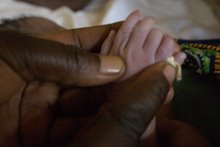

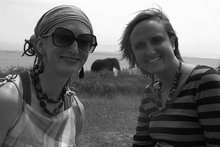
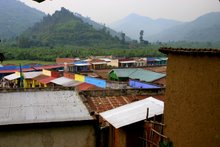
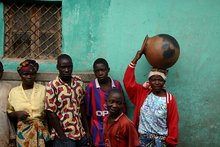
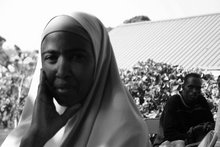
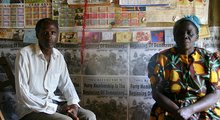
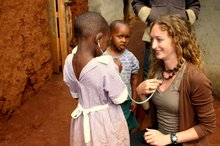
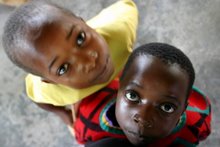

No comments:
Post a Comment